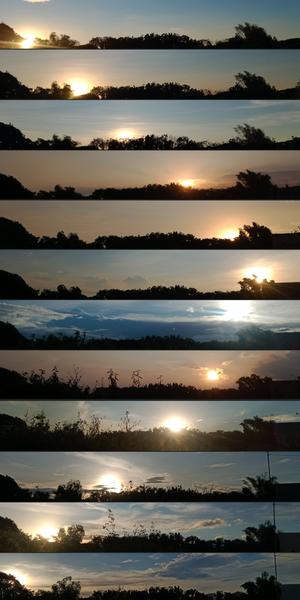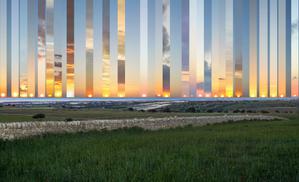Glossarbegriffe: Sonnenwende
Description: Die Erdachse steht nicht senkrecht zur Erdumlaufbahn um die Sonne, sondern ist in einem Winkel von 23,4 Grad zur Senkrechten geneigt. Folglich ändert sich der Winkel zwischen der Erdachse und unserer Sichtlinie zur Sonne im Laufe eines Jahres an verschiedenen Stellen ihrer Umlaufbahn. Die praktische Auswirkung ist, dass sich für einen Beobachter auf der Erde der höchste Punkt, den die Sonne jeden Tag über dem Horizont erreicht, im Laufe eines Jahres verändert. Die nördliche Sommersonnenwende, die gleichzeitig die südliche Wintersonnenwende ist, findet um den 21. Juni statt. Sie markiert den Zeitpunkt, an dem die Sonne auf der Nordhalbkugel am höchsten über dem Horizont steht und gleichzeitig auf der Südhalbkugel am niedrigsten. Die südliche Sommersonnenwende, die auch die nördliche Wintersonnenwende ist, findet um den 21. Dezember statt. Sie ist der Zeitpunkt, an dem die Sonne auf der Südhalbkugel am höchsten und auf der Nordhalbkugel am niedrigsten steht.
Zugehörige Glossarbegriffe:
See this term in other languages
Term and definition status: The original definition of this term in English have been approved by a research astronomer and a teacher The translation of this term and its definition is still awaiting approval
The OAE Multilingual Glossary is a project of the IAU Office of Astronomy for Education (OAE) in collaboration with the IAU Office of Astronomy Outreach (OAO). The terms and definitions were chosen, written and reviewed by a collective effort from the OAE, the OAE Centers and Nodes, the OAE National Astronomy Education Coordinators (NAECs) and other volunteers. You can find a full list of credits here. All glossary terms and their definitions are released under a Creative Commons CC BY-4.0 license and should be credited to "IAU OAE".
If you notice a factual or translation error in this glossary term or definition then please get in touch.
Zugehörige Medien
Wo die Sonne jeden Monat untergeht
Bildnachweis: John Paul Pile/IAU OAE (CC BY 4.0)
License: CC-BY-4.0 Creative Commons Namensnennung 4.0 International (CC BY 4.0) icons
The Path of the Sun
Bildnachweis: Frank Niessen/IAU OAE (CC BY 4.0)
License: CC-BY-4.0 Creative Commons Namensnennung 4.0 International (CC BY 4.0) icons
Sonnenwende und Tagundnachtgleiche
Bildnachweis: Tunç Tezel/IAU OAE (CC BY 4.0)
License: CC-BY-4.0 Creative Commons Namensnennung 4.0 International (CC BY 4.0) icons
Occasive Amplitude
Bildnachweis: Marcella Giulia Pace/IAU OAE (CC BY 4.0)
License: CC-BY-4.0 Creative Commons Namensnennung 4.0 International (CC BY 4.0) icons












